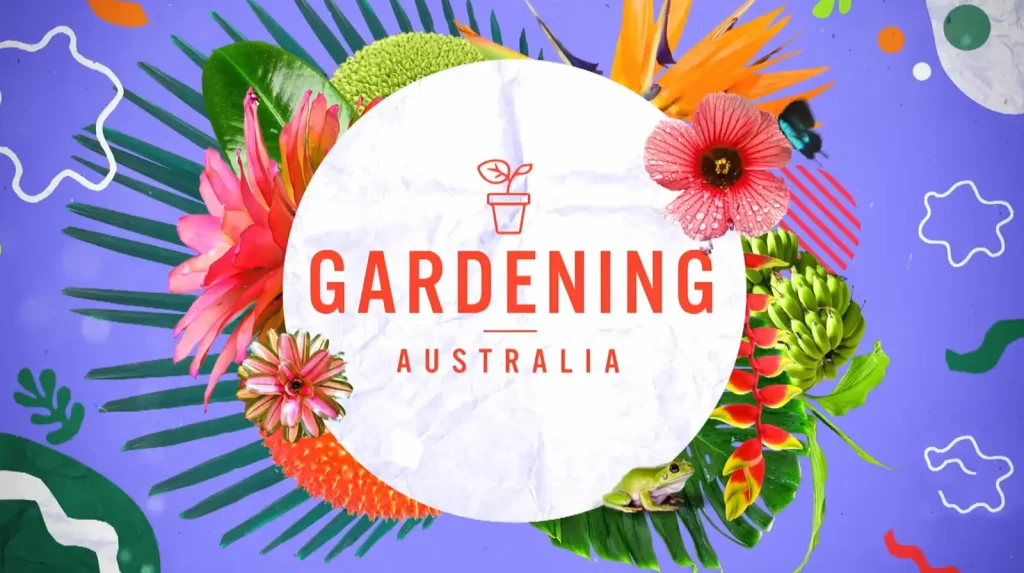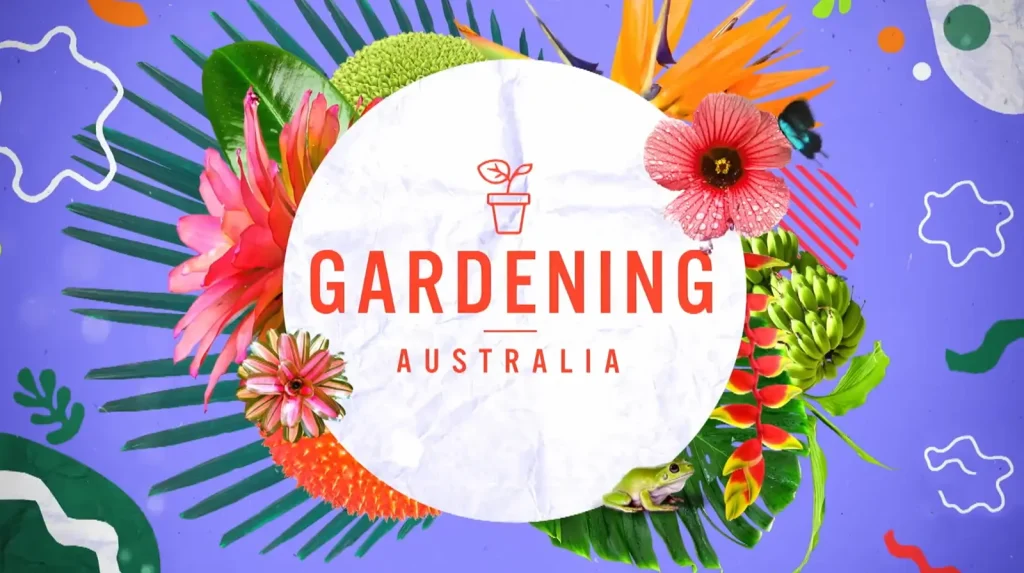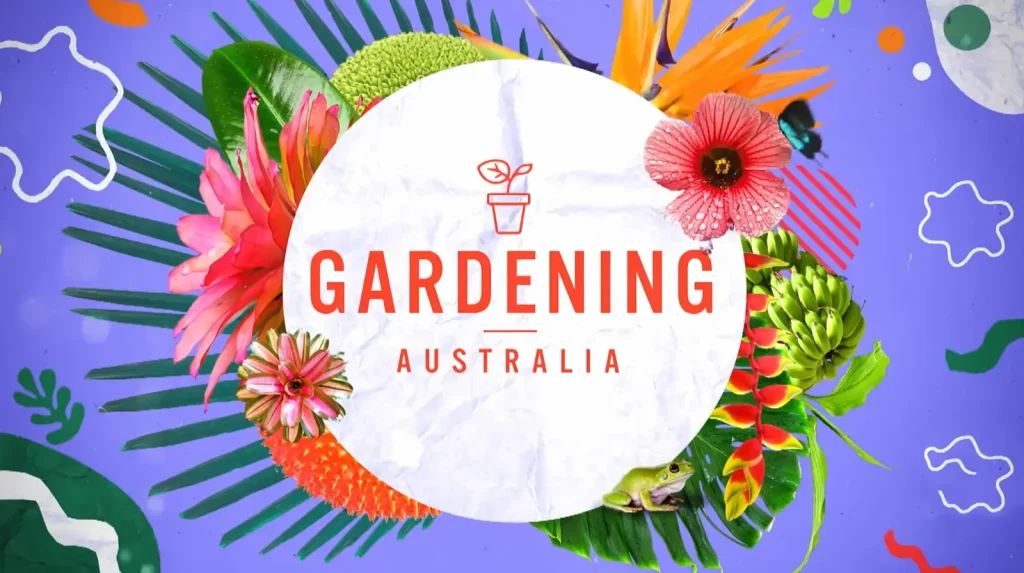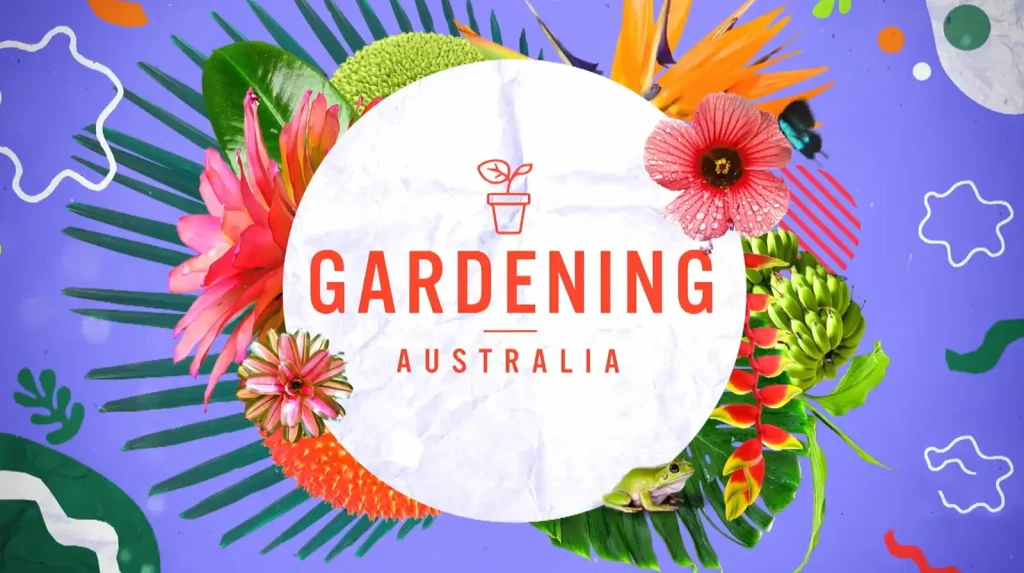Gardening Australia 2024 episode 2 – In the captivating second episode of Gardening Australia 2024, viewers are taken on a diverse and enriching journey through the world of horticulture, showcasing innovative gardening techniques, transformative landscapes, and the profound impact of plants on people’s lives.
The episode kicks off with Hannah, who embarks on a mission to combat the troublesome codling moth, a common pest that threatens fruit trees. With her expert knowledge and practical advice, Hannah introduces viewers to effective, environmentally-friendly strategies for protecting their orchards, ensuring a bountiful harvest without the use of harmful chemicals.
Next, we join Costa, the charismatic landscape architect with a vision to transform spaces into green havens. Costa shares his latest project, which involves turning a barren urban area into a vibrant, eco-friendly landscape. Through his meticulous planning and creative flair, Costa demonstrates the power of landscaping to not only beautify spaces but also to promote biodiversity and foster community spirit.
The episode then shifts focus to Millie, who explores the life-changing impact of flowers. Through heartwarming stories, Millie illustrates how flowers can bring joy, convey emotions, and create lasting memories. Whether it’s a simple bouquet to brighten someone’s day or elaborate floral arrangements for special occasions, Millie reveals the deep connection between humans and flowers, highlighting their ability to heal, celebrate, and express love.
Josh introduces viewers to the intriguing world of plant parasites, uncovering the secrets of an unusual species that thrives by siphoning nutrients from its host plants. With a blend of curiosity and scientific insight, Josh delves into the complex relationships within the plant kingdom, revealing the delicate balance between parasitism and symbiosis. His segment enlightens viewers on the importance of understanding these interactions for sustainable gardening and conservation efforts.
Gardening Australia 2024 episode 2
Sophie takes us on a journey into the realm of plant lore, uncovering the fascinating stories and myths that surround various plants. From ancient beliefs about the magical properties of herbs to the symbolic meanings of flowers in different cultures, Sophie’s exploration of plant lore offers a captivating glimpse into the ways plants have been revered and utilized throughout history. Her segment enriches our appreciation for the cultural significance of plants and encourages viewers to discover the hidden stories in their own gardens.
The episode concludes with an inspiring feature on a soldier who has turned into a social media sensation through his gardening endeavors. After serving in the military, this individual found solace and purpose in gardening, using his platform to share his journey of healing and transformation. His story highlights the therapeutic benefits of gardening, showcasing how tending to plants can provide mental peace, physical activity, and a sense of accomplishment. As a social media star, he motivates others to explore gardening as a way to improve their well-being and connect with nature.
Gardening Australia 2024 episode 2 is a testament to the diverse ways in which gardening touches our lives. From practical tips on pest control and landscaping ideas to the emotional and spiritual connections we share with plants, this episode invites viewers to deepen their understanding and appreciation of the natural world. Through engaging stories and expert advice, it inspires both novice and experienced gardeners to explore the endless possibilities that gardening offers, fostering a closer bond with nature and enriching their lives in the process.
Organic and Inorganic Mulches
Clarence delves into the nuanced world of gardening, specifically focusing on the distinctive attributes and benefits of both organic and inorganic mulches, essential components for any garden aiming for health and vitality.
Starting with organic mulch, Clarence explains that this category primarily consists of plant-derived materials, including but not limited to, chopped sugar cane, eucalyptus shreds, finely ground pine bark, pea straw, and lucerne hay. The essence of organic mulch lies in its ability to integrate seamlessly with the soil, enhancing its structure and fertility over time.
As these natural materials decompose, they release vital nutrients, contributing to the nourishment of plant roots and promoting a vibrant, thriving garden ecosystem. Furthermore, organic mulch plays a crucial role in weed suppression, offering a natural barrier that limits the growth of unwanted plants. Its moisture-retention properties are unmatched, ensuring that water is effectively conserved within the soil, thus providing a stable hydration source for plants during hot spells or drought conditions.
Transitioning to inorganic mulch, Clarence illustrates its popularity among professional landscapers, noting its unique advantages and aesthetic appeal. Common materials in this category include blue metal, smooth river stones, and decorative pebbles, each bringing a different visual and textural element to the garden. While inorganic mulches excel at suppressing weed growth, they share a limitation with their organic counterparts: the inevitability of weed penetration over time.
However, the comparison diverges significantly when considering decomposition — or the lack thereof. Inorganic mulches, composed of durable materials, remain structurally intact through the years, offering a long-lasting, maintenance-free ground cover option. Their capacity to retain soil moisture mirrors that of organic mulches, yet they possess the added characteristic of heat absorption.
Materials like blue metal can elevate soil temperatures, creating microclimates that benefit heat-loving plant species, such as cacti and succulents, by mimicking their natural environments. This thermal property, while advantageous for certain flora, may induce stress in plants less adapted to elevated temperatures, necessitating careful consideration when selecting mulch types for diverse plant collections.
Moreover, Clarence emphasizes the decorative potential of stone mulches in both outdoor and indoor settings. Their varied colors, shapes, and sizes enable gardeners to craft visually striking landscapes, enhancing the aesthetic appeal of garden beds, pathways, and even potted indoor plants. The strategic placement of inorganic mulch can transform the ordinary into the extraordinary, bringing a touch of elegance and sophistication to garden designs.
Clarence’s exploration of organic and inorganic mulches sheds light on their pivotal roles in gardening and landscape design. Each mulch type offers a suite of benefits tailored to different gardening needs, from soil enrichment and moisture conservation with organic mulches to weed suppression and decorative versatility with inorganic options.
The choice between organic and inorganic mulch should be informed by the specific requirements of the garden, the environmental conditions, and the aesthetic preferences of the gardener. By understanding the main differences and applications of these mulches, gardeners can make informed decisions that enhance the health, beauty, and sustainability of their green spaces.
Dividing Galangal
In the heart of Melbourne, a city known for its temperate climate, cultivating tropical plants offers a delightful escape to warmer lands. Jane, a gardening enthusiast, has embraced this challenge by nurturing Galangal, a cousin of the ginger plant, known scientifically as Alpinia sp. This exotic addition to her garden not only introduces a touch of the tropics but also enriches the diversity of her plant collection.
Galangal thrives under Jane’s care in a spacious pot, a necessity due to its rhizomatous root system that vigorously expands, seeking more room to grow. As the plant matures, its roots densely fill the pot, signaling the time for either repotting to accommodate its growth or dividing it to manage its size and propagate new plants.
Every one to two years, Jane embarks on the task of dividing the Galangal roots. This process involves carefully separating the root mass into smaller sections, each potentially becoming a new plant. The division is not just a means of propagation but also a generous act of sharing, as Jane often gifts some of the divisions to fellow gardening aficionados.
The technique for dividing Galangal is meticulous yet straightforward. Jane begins by gently easing the plant out of its pot, revealing a root ball densely packed with roots and crowned with new shoots eager to expand. With a sharp knife or clean secateurs, she makes precise cuts along the sides of the root ball, isolating sections between the sets of shoots. Each division, ideally comprising 4-5 stems, is carefully separated, ensuring a healthy start for new growth. These divisions can be smaller, depending on the desired outcome.
Following the division, Jane prepares the new plants for their next phase of growth. The divisions are potted in fresh, nutrient-rich mix, ready to flourish either in the garden or in new containers. This is an opportunity not only to expand her own garden but also to share these unique tropical plants with friends, spreading the joy and beauty of Galangal cultivation.
Galangal’s aversion to frost necessitates special care, particularly in Melbourne’s cooler months. Keeping the plant in a pot affords Jane the flexibility to move it to a protected area, safeguarding it from harsh weather conditions. The plant thrives in a partially shaded spot, tolerating even almost full shade, which mimics the canopy-covered environments of its native tropics. Moist, well-drained, and fertile soil provides the ideal conditions for Galangal, ensuring it receives the care it needs to grow lush and vibrant.
Jane’s experience with Galangal underscores the possibility and pleasure of growing tropical plants in less-than-tropical climates. Through careful selection of plant varieties, understanding their specific needs, and adopting practices like dividing for propagation and space management, gardeners can enjoy a diverse range of plants in their gardens. Jane’s Galangal not only adds an exotic flair to her garden but also serves as a testament to the adaptability of tropical plants and the rewarding nature of gardening, bridging climates and continents right from the comfort of home.
Hangers On
In the dense, untamed wilderness outside Perth, Josh embarks on a captivating journey to uncover the secrets of a native plant, Pilostyles hamiltoniorum, a botanical enigma thriving in the shadows of the Australian bush. Guiding him through this verdant world is Ryan Craig, a botanist deeply engrossed in his PhD research on botanical parasitology, a field that explores the complex relationships between plants where one derives its nutrients and water directly from another.
Globally, there are approximately 4,500 species of plants engaging in this parasitic lifestyle, but Pilostyles hamiltoniorum, flourishing in the Perth hills, stands out for its peculiar choice of hosts. It favors the native ‘egg and bacon’ plants, specifically Daviesia angulata, among the diverse flora spanning Western Australia. Despite the existence of 134 Daviesia species in the region, Pilostyles exhibits a remarkable selectivity, only targeting 10 species for its survival.
This particular parasitic plant is part of a small, yet globally distributed genus, Pilostyles, which includes 11 species, three of which are endemic to Western Australia. These species share a common trait; they all prey on shrubs from the pea family. Pilostyles hamiltoniorum manifests as minuscule buds along the host plant’s stem, which, upon closer inspection, reveal themselves to be flowers bursting forth from the main body of the parasite, ingeniously concealed within the host’s stem.
Ryan’s fascination with Pilostyles extends beyond its unique reproductive strategy. This plant defies conventional botanical principles; it lacks leaves, stems, or roots, and does not engage in photosynthesis. Yet, it flourishes, producing flowers that are pollinated by native bees, eventually yielding purple berries packed with up to 100 minuscule seeds. The dispersal and germination mechanisms of these seeds remain shrouded in mystery, as does their precise method of infiltrating new host plants.
Adding to the intrigue is the plant’s unexpected kinship with the Cucurbit family, which includes such familiar vegetables as cucumbers and pumpkins. This genetic relationship poses intriguing questions about the evolutionary pathways that led to such diverse life forms.
While Pilostyles hamiltoniorum contributes to the biodiversity of its habitat, its presence is not without consequence for its host plants. The parasitic intrusion disrupts the internal structure of the host’s stems, leading to varying degrees of damage. Some host plants appear unscathed by the invasion, while others struggle to survive, hinting at a complex ecological balance yet to be fully understood.
A pressing question in Ryan’s research is whether a single Pilostyles plant can inhabit a host or if multiple parasites can coexist within one plant. This question opens up a Pandora’s box of scientific inquiry, suggesting that the life cycle and impact of Pilostyles hamiltoniorum on its ecosystem are far from straightforward.
Ryan remarks, “There’s a lifetime of research that could go into this plant,” underscoring the profound mystery and potential that Pilostyles hamiltoniorum represents to botanists and ecologists alike. Its study not only challenges our understanding of plant relationships but also offers a window into the intricate web of life that sustains the unique biodiversity of Western Australia’s bushland.
Josh’s exploration, guided by Ryan’s expertise, illuminates the fascinating dynamics at play in the natural world, where survival often hinges on the delicate balance between cooperation and competition. Pilostyles hamiltoniorum, with its cryptic lifestyle and enigmatic evolutionary background, embodies the endless quest for knowledge that drives scientists to delve deeper into nature’s mysteries, seeking to unravel the secrets of life that flourish in the heart of Australia’s wild landscapes.
F.A.Q. about Gardening Australia 2024 Episode 2
Q.: What is Gardening Australia 2024 Episode 2 about?
A.: Gardening Australia 2024 Episode 2 offers viewers a comprehensive journey through the horticultural landscape, presenting innovative gardening techniques, transformative landscaping projects, and the profound effects of plants on human well-being. It features expert advice on combating common pests, the power of landscaping, the emotional impact of flowers, insights into plant parasites, the cultural significance of plants, and the therapeutic benefits of gardening.
Q.: How does Hannah suggest dealing with the codling moth problem in fruit trees?
A.: Hannah addresses the codling moth issue by recommending effective and environmentally-friendly strategies. These include using pheromone traps to monitor and reduce moth populations, applying organic insecticides at critical times, and maintaining garden hygiene by removing infected fruits and debris to prevent future infestations. Her approach ensures a healthy orchard without relying on harmful chemicals.
Q.: What are Costa’s key principles for transforming urban spaces into green havens?
A.: Costa’s landscaping projects focus on creating vibrant, eco-friendly spaces that enhance biodiversity and foster community spirit. He emphasizes the importance of meticulous planning, the integration of native plants, sustainable water management practices, and the incorporation of recreational areas to encourage community interaction. Costa’s work demonstrates how landscaping can beautify urban areas while promoting environmental stewardship.
Q.: Can you explain the role of flowers in our lives as discussed by Millie in the episode?
A.: Millie explores the life-changing impact of flowers, illustrating how they can convey emotions, celebrate milestones, and provide comfort during difficult times. Flowers serve as a universal language of love, sympathy, and joy, enriching our lives and strengthening bonds between individuals. Millie’s stories highlight the emotional and spiritual connections we share with flowers, underscoring their ability to heal and bring happiness.
Q.: What unique insights does Josh provide about plant parasites?
A.: Josh delves into the fascinating world of plant parasites, specifically focusing on a species that thrives by siphoning nutrients from its host. He explains the complex relationship between parasitic plants and their hosts, shedding light on the balance between parasitism and symbiosis. Josh’s segment educates viewers on the ecological significance of understanding these interactions for sustainable gardening and the conservation of plant biodiversity.
Q.: How does gardening benefit individuals struggling with mental health issues, according to the episode?
A.: The episode features the story of a soldier who found solace and purpose in gardening after his military service, becoming a social media sensation by sharing his journey. Gardening is presented as a therapeutic activity that offers mental peace, physical exercise, and a sense of accomplishment. It highlights how gardening can help individuals cope with stress, anxiety, and depression, promoting well-being and a deeper connection with nature.




